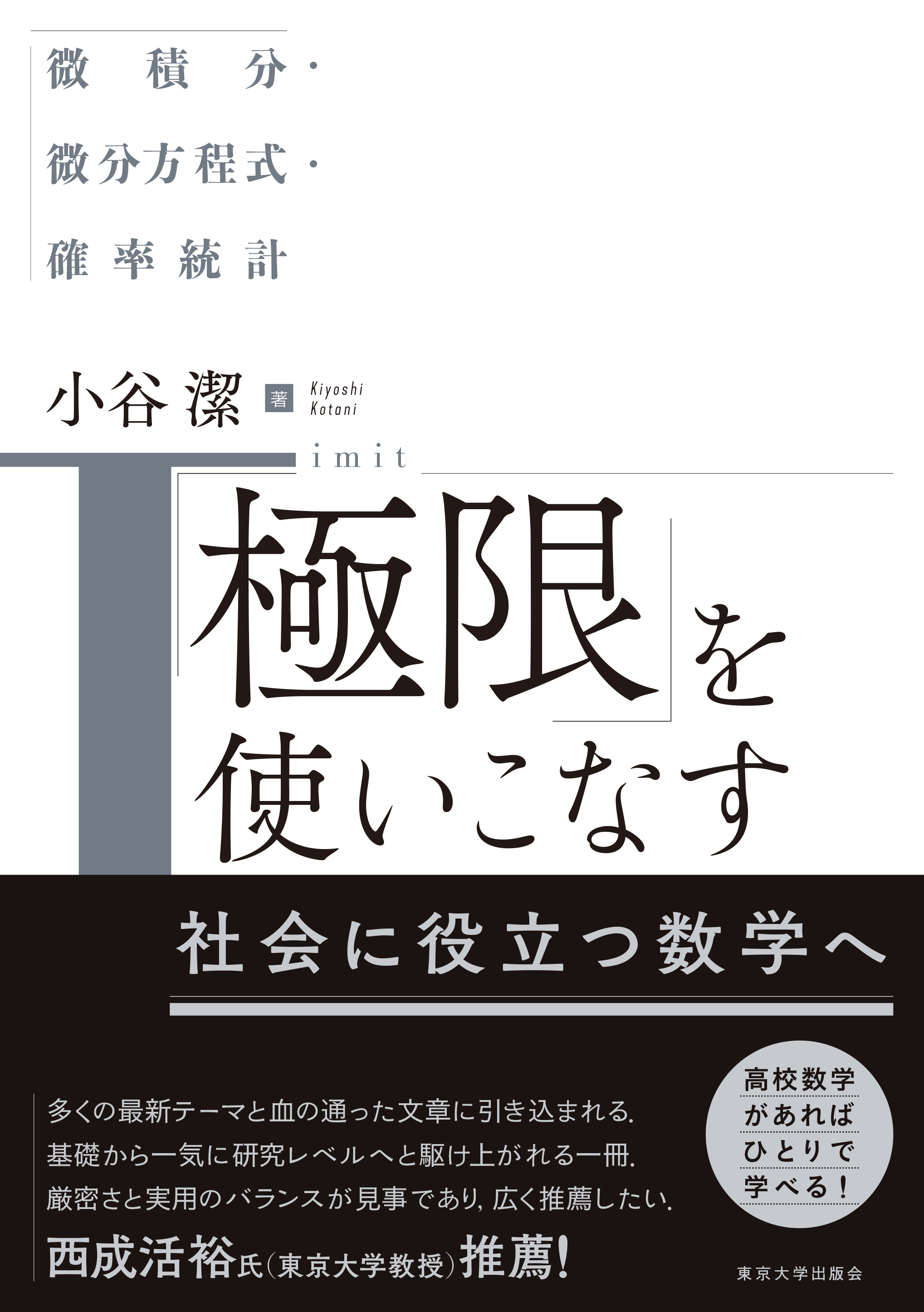
Title
Kyokugen wo Tsukaikonasu (Practical Calculus: How to Solve Real-World Problems)
Size
244 pages, A5 format
Language
Japanese
Released
October 31, 2017
ISBN
978-4-13-063903-3
Published by
University of Tokyo Press
Book Info
See Book Availability at Library
Japanese Page
Our society is overflowing with data, and the skills to handle the data are needed, regardless of disciplines. On the other hand, the mathematics that is taught in universities is more rigorous than the mathematics that is taught in high school, such as the epsilon-delta definition of a limit. Therefore, some students who were good at mathematics in high school sometimes have little interest in mathematics in university. To bridge the gap between high school and university mathematics, I believe that the application of mathematics to actual examples in physics, life sciences, and so forth, is important.
This book covers a field called “Mathematical analysis” in university mathematics. First, it reviews the mathematics up to high school with a few assumptions and intuitive explanations, and subsequently introduces advanced ideas with practical problems.
In the first lecture, the readers will learn the basics of analysis from high school mathematics by studying “Calculus” which is a major unit in both high school and university mathematics. The second lecture covers “differential equations.” In this lecture, the readers will learn how differential equations derived from phenomena are analyzed through examples of planetary orbits and electrical activity of neurons. In the third lecture, the readers will learn “probability and statistics” such as the central limit theorem and hypothesis testing. In the fourth lecture, the readers will learn how to deal with a wide range of problems by combining the topics covered in the first three lectures will be provided. Topics not covered in the general analysis textbooks, such as integration using pseudo-random numbers, are included.
On the practical side, there are columns on artificial intelligence and computer-based methods, as well as appendices that provide the information necessary for the readers to move on to the major textbooks in the analysis without any gaps.
The book can be used as a supplementary textbook for lectures in university mathematics and as light reading that connects mathematics to our daily lives.
(Written by KOTANI Kiyoshi, Associate Professor, Research Center for Advanced Science and Technology / 2020)



 Find a book
Find a book

